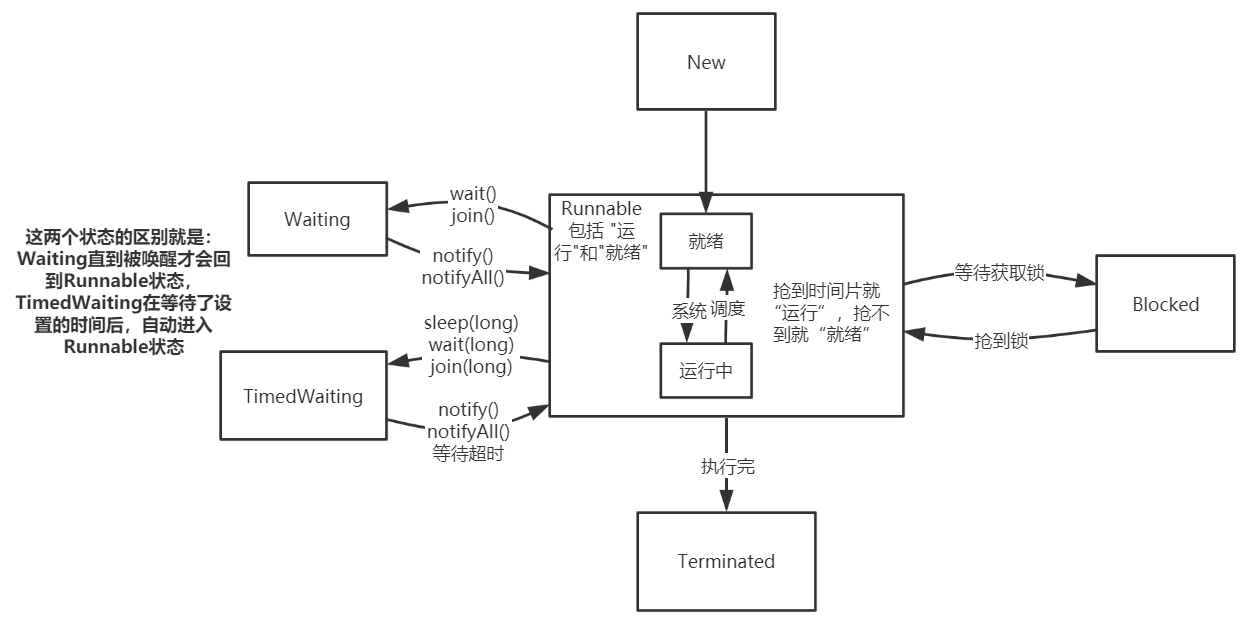1
2
3
4
5
6
7
8
9
10
11
12
13
14
15
16
17
18
19
20
21
22
23
24
25
26
27
28
29
30
31
32
33
34
35
36
37
38
39
40
41
42
43
44
45
46
47
48
49
50
51
52
53
54
55
56
57
58
59
60
61
62
63
64
65
66
67
68
69
70
71
72
73
74
75
76
77
78
79
80
81
82
83
84
85
86
87
88
89
90
91
92
93
94
95
96
97
98
99
100
101
102
103
104
105
106
107
108
109
110
111
112
113
114
115
116
117
118
119
120
121
122
123
124
125
126
127
128
129
130
131
132
133
134
135
136
137
138
139
140
141
142
143
144
145
146
147
148
149
150
151
152
153
154
155
156
157
158
159
160
161
162
163
164
165
166
167
168
169
170
171
172
173
174
175
176
177
178
179
180
181
182
183
184
185
186
187
188
189
190
191
192
193
194
195
196
197
198
199
200
201
202
203
204
205
206
207
208
209
210
211
212
213
214
215
216
217
218
219
220
221
222
223
224
225
226
227
228
229
230
231
232
233
234
235
236
237
238
239
240
241
242
243
244
245
246
247
248
249
250
251
252
253
254
255
256
257
258
259
260
261
262
263
264
265
266
267
268
269
270
271
272
273
274
275
276
277
278
279
280
281
282
283
284
285
286
287
288
289
290
291
292
293
294
295
296
297
298
299
300
301
302
303
304
305
306
307
308
309
310
311
312
|
public class Thread implements Runnable {
/** 这里只看一些 常见的参数 */
/** 线程名 */
private volatile char name[];
/** 优先级 */
private int priority;
/** 是否为守护线程 */
private boolean daemon;
/** 线程要执行的目标任务 */
private Runnable target;
/** 所属线程组 */
private ThreadGroup group;
/** 类加载器 */
private ClassLoader contextClassLoader;
/**
* ThreadLocal 能为线程设置线程私有变量 就是通过下面这个threadLocals变量完成的,
* ThreadLocal的get/set方法就是通过操作 各个线程的 threadLocals 变量实现的。
* 1、线程A持有一个 ThreadLocalMap 变量;
* 2、线程A调用一个类的 ThreadLocal变量 tlA 的 get/set方法;
* 3、tlA(ThreadLocal)的 get/set方法 获取当前线程A,调用 线程A 的 ThreadLocalMap变量 的get/put方法;
* 4、其它线程 调用 tlA(ThreadLocal)的 get/set方法 同理。
*/
ThreadLocal.ThreadLocalMap threadLocals;
ThreadLocal.ThreadLocalMap inheritableThreadLocals;
/** 线程栈的大小 */
private long stackSize;
/**
* Thread类定义了6个线程状态:New、Runnable、Blocked、Waiting、TimedWaiting、Terminated(终止)
* 实际上还会把 Runnable 再细分为 就绪(未抢到时间片) 和 运行中(抢到时间片)
*/
private volatile int threadStatus;
/** 最小优先级 */
public static final int MIN_PRIORITY = 1;
/** 中等优先级 */
public static final int NORM_PRIORITY = 5;
/** 最大优先级 */
public static final int MAX_PRIORITY = 10;
/**
* 内部枚举类,用来描述线程状态,状态值有:
* NEW: 新建,还未调用start()方法;
* RUNNABLE: 运行,在java多线程模型中,就绪和运行都是运行状态;
* BLOCKED: 阻塞;
* WAITING: 等待,需要其他的线程来唤醒;
* TIMED_WAITING:超时等待,可以在指定的时间内自动醒来,如 sleep()方法;
* TERMINATED: 终止,线程执行完毕。
*/
public static final class State extends Enum {
public static final State NEW;
public static final State RUNNABLE;
public static final State BLOCKED;
public static final State WAITING;
public static final State TIMED_WAITING;
public static final State TERMINATED;
private static final State VALUES[];
static {
NEW = new State("NEW", 0);
RUNNABLE = new State("RUNNABLE", 1);
BLOCKED = new State("BLOCKED", 2);
WAITING = new State("WAITING", 3);
TIMED_WAITING = new State("TIMED_WAITING", 4);
TERMINATED = new State("TERMINATED", 5);
VALUES = (new State[] { NEW, RUNNABLE, BLOCKED, WAITING, TIMED_WAITING, TERMINATED });
}
private State(String s, int i) {
super(s, i);
}
}
/**
* 一系列 构造方法 ------------------------------------------------------
* 可以看出来,其中都调用了init()方法,这也是一个约定俗成的规矩, 即,如果要在 new 时进行一些初始化操作,
* 那么请将初始化操作单独写在 init()方法中,然后在构造函数中调用该 init()方法
*/
public Thread() {
daemon = false;
stillborn = false;
threadLocals = null;
inheritableThreadLocals = null;
threadStatus = 0;
blockerLock = new Object();
init(null, null, (new StringBuilder()).append("Thread-").append(nextThreadNum()).toString(), 0L);
}
public Thread(Runnable runnable) {
daemon = false;
stillborn = false;
threadLocals = null;
inheritableThreadLocals = null;
threadStatus = 0;
blockerLock = new Object();
init(null, runnable, (new StringBuilder()).append("Thread-").append(nextThreadNum()).toString(), 0L);
}
Thread(Runnable runnable, AccessControlContext accesscontrolcontext) {
daemon = false;
stillborn = false;
threadLocals = null;
inheritableThreadLocals = null;
threadStatus = 0;
blockerLock = new Object();
init(null, runnable, (new StringBuilder()).append("Thread-").append(nextThreadNum()).toString(), 0L,
accesscontrolcontext);
}
public Thread(ThreadGroup threadgroup, Runnable runnable) {
daemon = false;
stillborn = false;
threadLocals = null;
inheritableThreadLocals = null;
threadStatus = 0;
blockerLock = new Object();
init(threadgroup, runnable, (new StringBuilder()).append("Thread-").append(nextThreadNum()).toString(), 0L);
}
public Thread(String s) {
daemon = false;
stillborn = false;
threadLocals = null;
inheritableThreadLocals = null;
threadStatus = 0;
blockerLock = new Object();
init(null, null, s, 0L);
}
public Thread(ThreadGroup threadgroup, String s) {
daemon = false;
stillborn = false;
threadLocals = null;
inheritableThreadLocals = null;
threadStatus = 0;
blockerLock = new Object();
init(threadgroup, null, s, 0L);
}
public Thread(Runnable runnable, String s) {
daemon = false;
stillborn = false;
threadLocals = null;
inheritableThreadLocals = null;
threadStatus = 0;
blockerLock = new Object();
init(null, runnable, s, 0L);
}
public Thread(ThreadGroup threadgroup, Runnable runnable, String s) {
daemon = false;
stillborn = false;
threadLocals = null;
inheritableThreadLocals = null;
threadStatus = 0;
blockerLock = new Object();
init(threadgroup, runnable, s, 0L);
}
public Thread(ThreadGroup threadgroup, Runnable runnable, String s, long l) {
daemon = false;
stillborn = false;
threadLocals = null;
inheritableThreadLocals = null;
threadStatus = 0;
blockerLock = new Object();
init(threadgroup, runnable, s, l);
}
private void init(ThreadGroup threadgroup, Runnable runnable, String s, long l) {
init(threadgroup, runnable, s, l, null);
}
/**
* 初始化线程
*/
private void init(ThreadGroup threadgroup, Runnable runnable, String name, long l,
AccessControlContext accesscontrolcontext) {
// 参数校验,线程name不能为null
if (name == null)
throw new NullPointerException("name cannot be null");
this.name = name.toCharArray();
// 当前线程就是该线程的父线程
Thread parent = currentThread();
SecurityManager securitymanager = System.getSecurityManager();
if (threadgroup == null) {
if (securitymanager != null)
threadgroup = securitymanager.getThreadGroup();
if (threadgroup == null)
threadgroup = parent.getThreadGroup();
}
threadgroup.checkAccess();
if (securitymanager != null && isCCLOverridden(getClass()))
securitymanager.checkPermission(SUBCLASS_IMPLEMENTATION_PERMISSION);
threadgroup.addUnstarted();
// 守护线程、优先级等设置为父线程的对应属性
group = threadgroup;
daemon = parent.isDaemon();
priority = parent.getPriority();
if (securitymanager == null || isCCLOverridden(parent.getClass()))
contextClassLoader = parent.getContextClassLoader();
else
contextClassLoader = parent.contextClassLoader;
inheritedAccessControlContext = accesscontrolcontext == null ? AccessController.getContext()
: accesscontrolcontext;
target = runnable;
setPriority(priority);
if (parent.inheritableThreadLocals != null)
// 创建线程共享变量副本
inheritableThreadLocals = ThreadLocal.createInheritedMap(parent.inheritableThreadLocals);
stackSize = l;
// 分配线程id
tid = nextThreadID();
}
public synchronized void start() {
//假若当前线程初始化还未做好,不能start,0->NEW状态
if (threadStatus != 0)
throw new IllegalThreadStateException();
//通知group该线程即将启动,group的未启动线程数量减1
group.add(this);
boolean started = false;
try {
// 调用native的start0()方法 启动线程,启动后执行run()方法
start0();
started = true;
} finally {
try {
//启动不成功,group设置当前线程启动失败
if (!started) {
group.threadStartFailed(this);
}
} catch (Throwable ignore) {
}
}
}
private native void start0();
public void run() {
if (target != null)
target.run();
}
/**
* 请求终止线程。interrupt不会真正停止一个线程,它仅仅是给这个线程发了一个信号,
* 告诉它要结束了,具体要中断还是继续运行,将由被通知的线程自己处理
*/
public void interrupt() {
if (this != Thread.currentThread())
checkAccess();
synchronized (blockerLock) {
Interruptible b = blocker;
if (b != null) {
interrupt0();
b.interrupt(this);
return;
}
}
interrupt0();
}
private native void interrupt0();
/**
* 线程main 调用了线程A的join方法,则 线程main 会被阻塞,直到线程A执行完毕
*/
public final void join() throws InterruptedException {
join(0);
}
/**
* 实际上是利用 wait/notify机制 来实现的
*/
public final synchronized void join(long millis) throws InterruptedException {
long base = System.currentTimeMillis();
long now = 0;
if (millis < 0) {
throw new IllegalArgumentException("timeout value is negative");
}
// millis 为 0,所以走这个分支
if (millis == 0) {
// 当前线程是否还在运行,还在运行 则main线程 进入等待状态,直到 A线程运行完毕,将其唤醒
while (isAlive()) {
wait(0);
}
} else {
while (isAlive()) {
long delay = millis - now;
if (delay <= 0) {
break;
}
wait(delay);
now = System.currentTimeMillis() - base;
}
}
}
/**
* 线程睡眠指定的时间,释放CPU资源,但不释放锁
*/
public static native void sleep(long millis) throws InterruptedException;
/**
* 线程是否还在运行
*/
public final native boolean isAlive();
}
|



